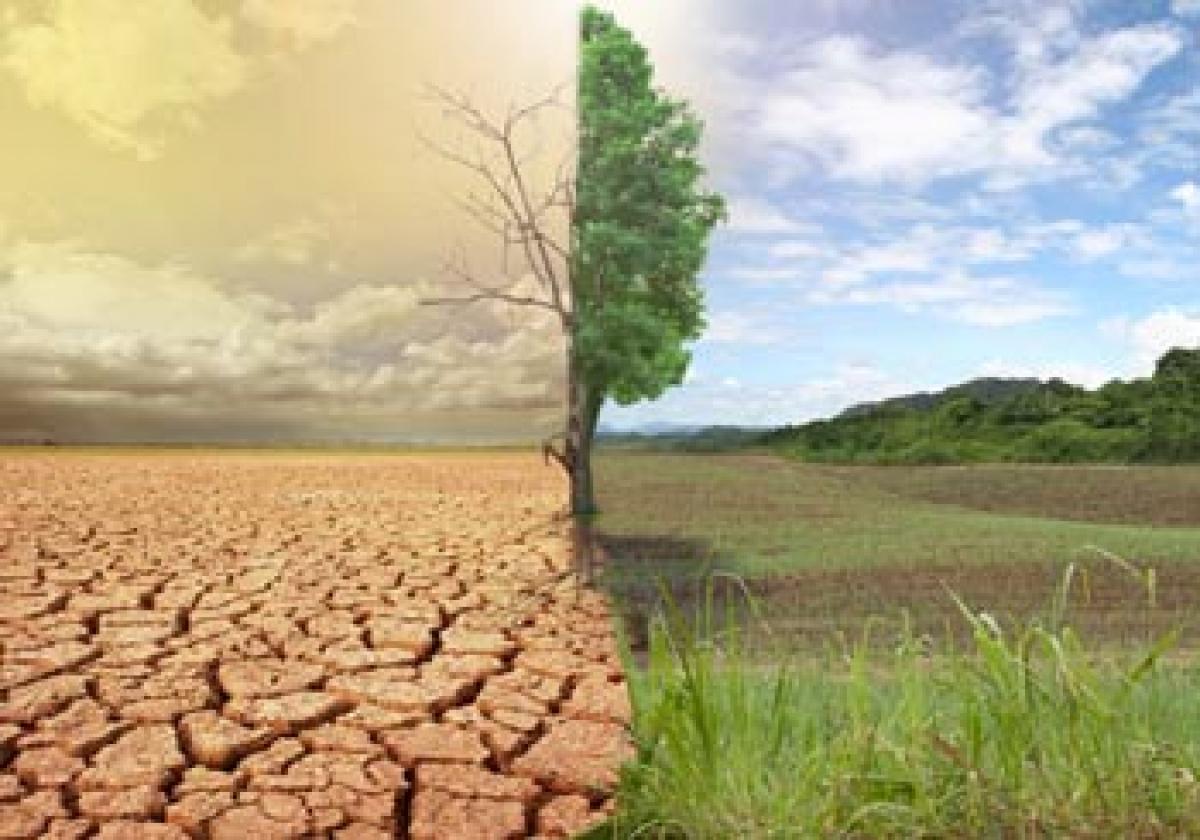Live
- G20 Leaders Will Talk About Climate, Taxes, and Trump's Return in Brazil
- COP29: CDRI announces $8 million funding for 12 projects to address climate crisis
- Anti-Telgu remarks: Actor Kasthuri Shankar moves court for bail
- Samsung AR Smart Glasses Set to Launch in 2025, Featuring Ray-Ban Meta-Like Design
- Kerala Industries Minister confident that new policy will boost plantation sector
- Madras HC plans inter-departmental monitoring committee to combat drug use in TN
- Bihar: Spotted deer dies due to heart attack in Banka district
- Mushtaq Ali T20: Shami to spearhead Bengal bowling attack, Gharami named captain
- Kharge's clarion call to oust Maharashtra's BJP-backed MahaYuti
- Why Ukraine’s Use of US Missiles Against Russia Could Lead to World War 3
Just In

Finally, the high-level climate talks in Paris have decided to mimic the tradition of tribes in Africa to resolve the thorny and nagging issues between rich and poor countries that have proven to be insurmountable even for the well-seasoned French Presidency.
 Finally, the high-level climate talks in Paris have decided to mimic the tradition of tribes in Africa to resolve the thorny and nagging issues between rich and poor countries that have proven to be insurmountable even for the well-seasoned French Presidency.
Finally, the high-level climate talks in Paris have decided to mimic the tradition of tribes in Africa to resolve the thorny and nagging issues between rich and poor countries that have proven to be insurmountable even for the well-seasoned French Presidency.
"Indaba" is a word used in traditional Xhosa and Zulu tribes in Southern Africa for an open dialogue held by chiefs of their own or other tribes to resolve the issues that affect all.
Indaba-strategy was employed in the Durban climate talks in 2011, and now in 2015, the French presidency using it as tool of negotiations in open and transparent way. It seems to be working - at least partially. The Indabas have helped in making very final negotiating text draft - as of December 9 - of just about a manageable 29 pages.
One of the hotly-debated issues, apart from differentiation and financing, is the issue of ambition that includes whether the new agreement should include keeping temperature rise by end of this century below 2 degrees Celsius relative to the pre-industrial level or aim for a more ambitious target of below 1.5 degrees.
The Intergovernmental Panel on Climate Change (IPCC) is quite explicit in guiding policy makers and negotiators on this issue. Its Fifth Assessment Report (2014-2015) says each degree rise would result in increasing devastation of the earth's ecosystem and unbearable losses in terms of lives and infrastructure.
Fifty-two small island countries that are taking part in the Paris climate talks have taken the very justifiable stand that the new agreement has to be ambitious to limit the temperature rise to 1.5 degrees and not 2 degrees C. Small Island Developing States (SIDS) like the Maldives, Tuvalu and Vanuatu are fighting for their very survival and even existence.
A recent paper published in Nature magazine concludes that 1.5 degrees is feasible, it just needs a further halving of the already tight 21st century carbon budget and for negative emissions to be achieved some 10 to 20 years earlier than for the 2 degrees scenarios.
There are other important measures that global political leaders have forgotten but can easily undertake for their own benefits. Reduction of GHG emissions usually considers carbon dioxide emissions from burning of fossil fuel in transport, power plants and industries like cement and steel. But there are other GHG emission called non-CO2 GHGs that include methane emitted mainly from the petroleum refineries, nitrous oxide mainly emitted from the excessive use of fertilisers, hydrofluorocrbons (HFCs) - which have been used as alternatives to chlorofluorocarbons - and other man-made perfluorocarbons used in transformers and electronic industries.
In terms of their present contribution to total global warming, non-CO2 gases contribute about 20 per cent. However by 2040, this is likely to reach 50 percent. They, unfortunately, are the 'forgotten 50' in the Paris climate talks.
The UNEP (UN Environment Programme)-led Climate & Clean Air Coalition (CCAC) of more than 50 countries produced a paper, contributed by world renowned scientists including Nobel Laureate Mario Molina, which stated that early action on these gases, particularly those with shorter atmospheric life, can contribute to reduction of warming by 0.6 degrees C by 2100. This reduction is 0.1 deg C more than what SIDS are demanding.
Such energy efficiency advantages, if implemented, will be enormous as per the latest study conducted by Lawrence Berkeley Laboratory in California. Its report stated that non-HFC super-efficient air-conditioner would mean saving electricity in India equivalent of twice the government's 100 GW solar power target. Further, as most of the non-CO2 GHGs have shorter lifetimes (10-15 years),
their emission reduction would give early results related to reducing warming as compared to CO2, whose lifetime is about 100 years. Probably, the French presidency can consider holding Indaba for non-CO2 GHGs to honor the wish of SIDS and even other countries.
By Rajendra Shende

© 2024 Hyderabad Media House Limited/The Hans India. All rights reserved. Powered by hocalwire.com







